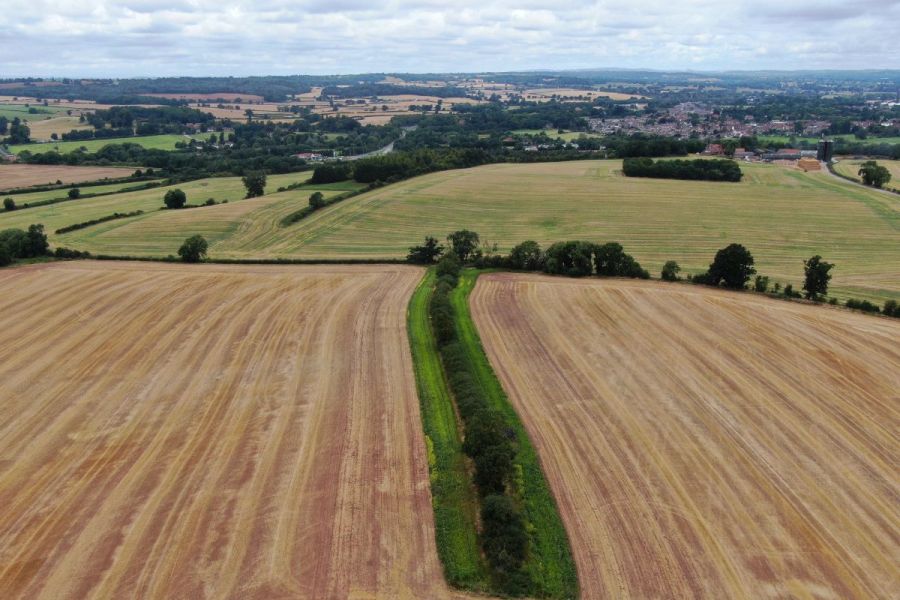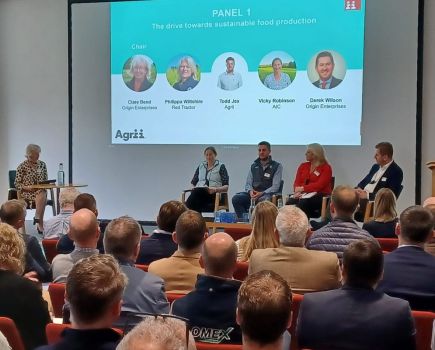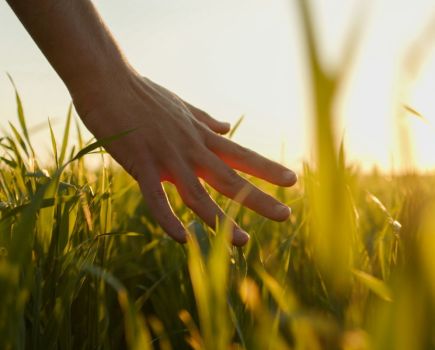Tackling the new 2023 SFI in a systematic manner could help producers to achieve the most from the scheme. CPM explores a simplified approach and the impact it’s having on one farm.
“As BPS disappears, everyone is going to have to look to these and other opportunities to diversify their incomes.”
By Rob Jones
The new 2023 SFI rules remain complex and confusing in parts, but taking a step-by-step approach to their application could help growers to get the most out of them, believes farm business consultant, Paul Pickford.
“While 2024 has started with the promise of numerous new SFI options to be introduced during the summer, coupled to a mixed SFI/countryside stewardship scheme, there’s much to gain from making a start with things as they currently stand.
“There’s little doubt that DEFRA has succeeded in achieving one of their main objectives for the new SFI application service, which is to make it quicker and more straightforward for farmers. But it’s still a daunting task for many,” he says.
According to Paul, who is a consultant for Agrii, looking below the surface will reveal much more flexibility as to how to implement the rules and manage them, so it should prove a less demanding process to manage over the years.
“With 2027 being the last payment under the old BPS scheme, it’s important producers understand as much as possible about what SFI offers and how they can make it work as effectively. A good starting point for many applicants will be to break down the application process into distinct stages,” explains Paul.
Where the biggest wins will be achieved depends very much on the size of individual farms, he points out. “With some of the stage one ‘easy wins’ being based on single payments regardless of area involved, smaller farms will benefit from these disproportionately relative to larger businesses.
“Where bigger enterprises might really win out, by contrast, is in stages two and three when they start making changes to farming and land management practices to leverage payments made per hectare of land involved,” says Paul.
So what are the areas and business practices producers should act on first? Paul suggests that they’re probably things which are already being done. “To net £6/ha (plus £97), all you have to do is test your soil organic matter and prepare a soil management plan on the nature of your soils and the risks they might be exposed to in the future.
“Most producers will be doing this to an extent anyway as part of the Red Tractor scheme and would have carried it out under cross compliance. Once you’ve done this, you also have access to a management payment of £20/ha for the first 50ha of your land,” he explains.
Furthermore, Paul says assessment of hedgerows, size, width, height etc, will pay £5 for every 100m. “You can then cut them every year, as long as you cut them a little higher, or you can do this every second or third year for a further £13/100m. Many farmers do this every other year anyway, so the £18/100m on offer for this is a very definite easy win.”
On the same theme is the single one-off payment of £1129 available under SFI for completing an Integrated Pest Management (IPM) plan, he points out.
“Again, many will be completing this as part of Red Tractor. It’s similar for the nutrient management plan and, whether under the NVZ rules or the farming rules for water, everybody should already have one of these and it’s worth £652 under SFI.
“Between management, IPM and nutrient management plans, there’s just under £2800 on offer within the scheme and that’s a good start,” says Paul.
He believes some elements which have been re-introduced from ELS, such as the arable field corners scheme, are worth thinking about. “Where farmers used to swing around and back in and do the whole field, ELS encouraged them to leave the corner and that’s now paying £590 for every hectare of land left in this way under the new SFI.”
On some farms, the buffer strips that were put in under ELS are still there and again these will attract payments, as will creating new ones, he adds. “On an arable field, you’ll get £451/ha for having a buffer strip, planting multi-species cover crops attracts a payment of £129/ha, plus a companion crop will pay you £55/ha. Crops that have no insecticide use will get another £45/ha.”
For those putting in new corners and buffer strips, land will be taken out of production and this is where things become a little more complicated and where stage two comes in, he explains.
“Ultimately, it’s about identifying the parts of the farm that aren’t profitable for cropping and could benefit more from being in SFI. If the average yield of a particular field is 10-11t/ha, then it’s obviously making some good money. But there’ll be parts of that field, whether it’s a boggy corner or a shady bit under a hedge, that might only be doing 5t/ha.
“Choosing to grow a pollinator mix, wildflowers or some winter bird food on that particular piece of land could not only make a more positive contribution to the environment, it would make you more money,” suggests Paul.
“Those three options will all make a gross margin of somewhere just over £550/ha which could be considerably more than you would have earned by growing 5t/ha of wheat.”
In many cases, growers already know exactly where their least productive areas are but in some instances, Paul thinks this may require further investigation.
“The bad bits are obvious, but the more marginal areas will require a bit more work to identify. If an area has always produced 4-5t/ha that’s a given. But if it produces 7t/ha in most years and a bit more in some, that’s a harder call.
“Being a three year scheme, unlike the old stewardship schemes which were five years, does mean that if you get something wrong it’s not the end of the world, but it’s far better to put the effort in to get the best out of it from the beginning,” he explains.
According to Paul, some of the benefits from looking at the finer detail may only be small, but it’s the aggregation of these improvements which makes all of the difference. “Take the case of headlands, for example. It could be that you’ve turned on two particular headlands for many years without really appreciating the implications of this.
“Looking at yield information from the last 3-5 years could tell you yields are down 15% in these areas, probably as a result of compaction, and a quick calculation can reveal exactly what that is costing in monetary terms.
“It could be that a better result can be achieved through planting some wildflowers or pollen and nectar (IPM2 or AHL1) and using that as a turning headland. The last thing you want to be doing is replacing profitable cropping with game cover, for example, through a lack of imagination and information or simply time to evaluate the situation properly.”
Having pulled out of his SFI pilot on 214ha near Alcester in 2022, Warwickshire grower, Paul Wilson has just entered all 755ha of G.W. Wilson & Sons’ owned and tenanted arable land and small amount of permanent pasture into the 2023 SFI.
He says setting up the original pilot was time-consuming but not difficult and the arable soils standard, in particular, suited him well. “But in the end, we simply couldn’t justify taking out of production even the 5% of land required by the Introductory Arable Land Standard for the payment available.
“At the same time, the scheme wasn’t compatible with the attractive carbon payments opportunity we were also exploring. So, we had to pull out.”
Working with Paul Pickford, Paul Wilson now believes the greater flexibility of the new scheme and the fact it can be run in parallel with carbon credits makes it a much more attractive option. Adding all the Wilson’s 2023 SFI actions together, the team calculate that, after costs, they should be able to replace around 33% of their original Basic Payments Scheme income with their current plan.
G.W.Wilson & Son’s 2023 SFI Plan
| SFI Action | Area |
| SAM 1: Soil management planning | All |
| SAM2: Multi-species winter cover crops | 40ha |
| HRW1: Hedgerow recording | All |
| HRW2: Hedgerow management | All |
| HRW3: Hedgerow tree management | All |
| IPM1: Integrated pest management planning | All |
| IPM3: Companion cropping | 120ha |
| IPM4: No insecticide use | 378ha |
| NUM1: Nutrient management review | All |
| NUM3: Legume fallow (three year) | 3.3ha |
| NUM3: Legume fallow (rotational) | 40ha |
| AHL2: Winter bird food | 5.3ha |
| AHL3: Grassy field corners and blocks | 12ha |
| AHL4: Buffer strips | 3.6ha |
| LIG1: Low input grassland | 17ha |
Furthermore, soil carbon benchmarking during the past season suggests they’re likely to virtually double this through their annual carbon payments.
“The first thing we did in building our 2023 plan was to include all of the SFI actions we are already doing as a business and for Red Tractor, Farming Rules for Water and the like,” explains Paul Wilson. “This gave us a good soil, IPM, nutrient and hedgerow management base for our scheme. It’s involved some extra work in places such as assessing and measuring all our hedgerows, for instance.
“But this has been a very useful exercise in itself, enabling us to identify additional field corners and rough areas suitable for other SFI actions as well as understanding our field boundaries in more detail than ever before,” he says.
Going through current practices, the two Pauls then identified specific areas for additional actions. Paul Wilson says having always grown just over 5ha of winter game cover, the farm had a good amount of buffer strips, and found a surprising area of field corners and inconvenient areas that would be better off down to grass than cropped.
“We also had a small, very difficult field that lent itself ideally to a three-year NUM3 legume fallow. Going for a reasonable area of multi-species winter cover (SAM2) we can rotate around ahead of our peas or spring barley makes perfect sense for us too.
“Cover cropping is something we’ve been doing anyway to improve our soils as well as protecting them, while providing some useful sheep grazing,” he says.
Paul Wilson explains the new SFI rules allow him to continue the grazing and, while the cover is supposed to be maintained through December, January and February, he can destroy it up to six weeks ahead of sowing a following crop, so it shouldn’t get in the way of barley drilling.
“We’ve been experimenting with companion cropping for a while to try to help our oilseed rape to get away from flea beetle, so IPM3 was another logical element,” says Paul Wilson.
Paul Pickford admits there was some debate around the IPM4 no insecticide use action. “Paul [Wilson] gave up spraying beans for bruchids years ago, has virtually given up doing so for CSFB and doesn’t generally have serious problems with BYDV. But for flexibility and safety – just in case – we opted to commit only half the arable area.
“After all, within the three-year SFI agreement we’re able increase the area to 100% or cut down by 50% in the following years. So, it’s worth not over-committing to start with. The same applies to the rotational area of NUM3 legume fallow we’ve put into our plan. This fits in nicely as an extra break in place of beans or OSR, taking the pressure off OSR establishment in a difficult year and giving a great entry for milling wheat.
“It means a fair level of income foregone from this area, but it should deliver a decent gross margin of around £480/ha while giving Paul the flexibility to drill it in the spring having glyphosated-off an overwintered stubble or cover to help with blackgrass management,” says Paul Pickford.
Even though it will only recover a third of their original BPS entitlement, Paul and Paul see the 2023 scheme as an important opportunity to seize in the post-BPS world, with carbon payments increasingly important.
“It’s early days yet, but our initial benchmarking with a sophisticated carbon certification system across 181ha of ground in very good condition here at Larkstoke Farm shows our regime is sequestering an average of 5.04t/ha of CO2 e annually,” says Paul Wilson.
“Based on current carbon certificate rates, it would have earned us a payment of £130/ha – £104/ha paid in the following year with £26/ha held over for the future as a ‘loyalty bonus’.
“While all our ground isn’t capable of delivering such a good sequestration performance, we’re conservatively budgeting for a return of over £60/ha (before bonus) from the 755ha we currently have in the scheme for payment in 2024, once all the auditing is completed on our 2023 season. This looks like matching the return we will get from SFI, putting us in a far better place overall.”
Paul Pickford adds that with carbon credits already generating an average annual payment of £55/ha for the UK farms involved, they are a particularly exciting opportunity. “It’s an annual scheme, paying us for what we actually achieve each year through a well-validated process generating carbon credits that are only sold to food and fibre producers, so we aren’t providing off-setting excuses for other industries.
“As BPS disappears, everyone is going to have to look to these and other opportunities to diversify their income alongside what government is prepared to pay for ‘public goods’.
“In everything we do, though, I have no doubt that careful planning and the greatest possible flexibility will be the primary requirements – not least with the extent to which both our climate and markets are changing,” he concludes.
This article was taken from the latest issue of CPM. For more articles like this, subscribe here.
Sign up for Crop Production Magazine’s FREE e-newsletter here.




